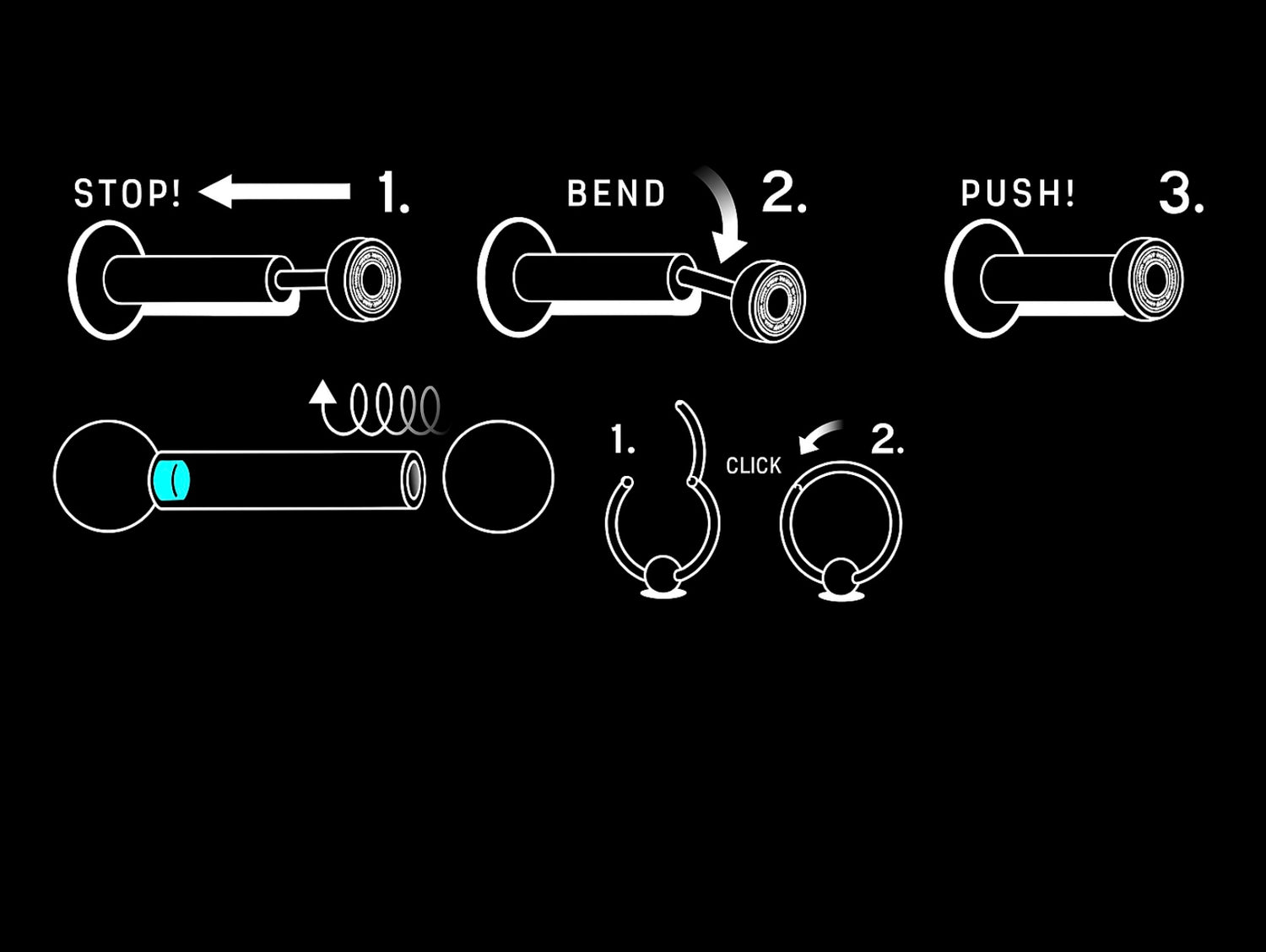Collapsible content
Surgical Steel (316L)
Implant-grade surgical steel (316L) is a stainless steel alloy commonly used in medical procedures due to its high corrosion resistance. It’s hypoallergenic for most people and suitable for healed piercings. However, because it contains nickel (4–8%), those with metal sensitivities may prefer titanium. Its composition includes 16–18% chromium, 2–3% molybdenum, and varying amounts of nickel.
Titanium (ASTM F-136)
Titanium is lightweight, strong, and completely nickel-free, making it ideal for people with metal allergies. It contains 6% aluminum and 4% vanadium. Titanium is biocompatible, making it highly recommended for fresh piercings and medical implants.
Niobium (Nb 41)
Niobium, also known as columbium, is a hypoallergenic, nickel-free metal with similar hardness to titanium. It is safe for healed piercings and comes in a variety of sizes. Anodized niobium gets its color from a non-toxic oxide layer, not from dyes or coatings.
Gold (Au)
Gold is a naturally hypoallergenic metal. For body jewelry, only 14k or higher, nickel-free, and cadmium-free gold should be used for initial piercings. Be cautious: white and low-karat gold may contain nickel. Gold-plated jewelry is not suitable for fresh piercings due to its tendency to chip or fade, exposing base metals.
Bioplast
Bioplast is a flexible, biocompatible plastic developed for body jewelry. It's heat-tolerant (autoclavable), ideal for healing and swelling, especially in facial and industrial piercings. Though safe, plastic jewelry is not corrosion-resistant, so it requires regular cleaning—even after healing—to prevent buildup and odor.
Platinum
Platinum is biocompatible and hypoallergenic, but rarely used in body jewelry due to its cost and difficulty to work with. It’s suitable for piercings but not widely available.
Anodized Jewelry
Titanium & Niobium can be anodized, creating color through a safe oxide layer rather than coatings or dyes. This makes them safe for piercings and ideal for those wanting color without sacrificing quality.
Plated Jewelry (e.g., Gold-Plated)
Gold-plated jewelry has a very thin layer of gold (as little as 0.05%) over metals like copper or brass. Not suitable for initial piercings, as the plating can wear off and expose allergens. It’s okay for healed piercings, but keep in mind the plating will fade with time.

